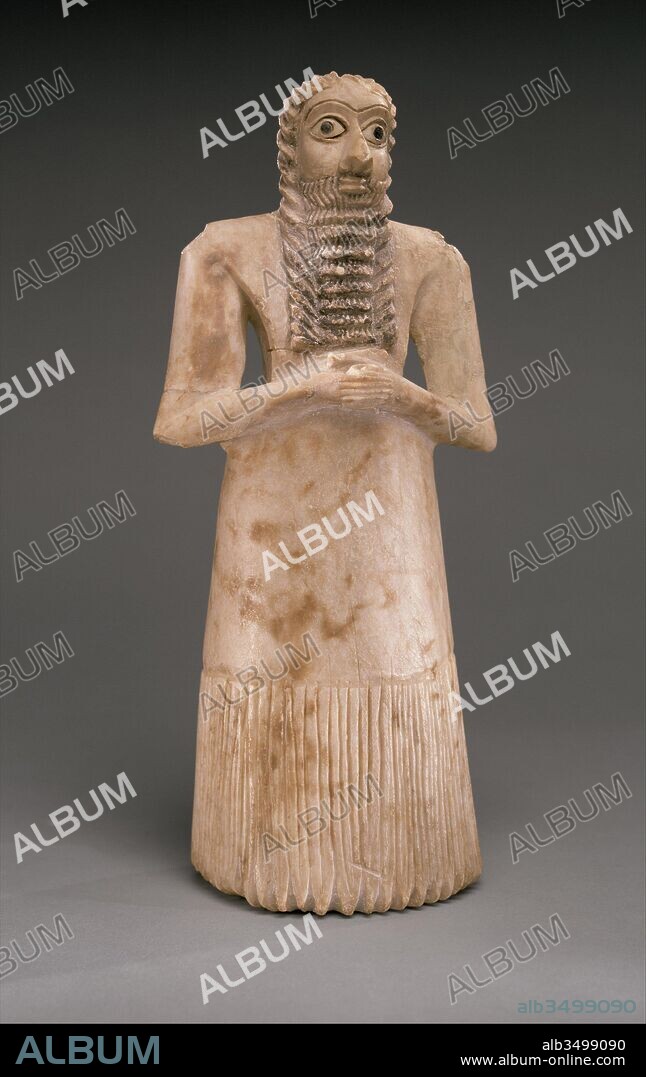alb3499090
Standing male worshiper, Early Dynastic I-II, ca. 2900–2600 B.C., Mesopotamia, Eshnunna (modern Tell Asmar), Sumerian, Gypsum alabaster, shell, black limestone, bitumen, 11 5/8 x 5 1/8 x 3 7/8 in. (29.5 x 12.9 x 10 cm), Stone-Sculpture, In Mesopotamia gods were thought to be physically present in the materials and experiences of daily life. Enlil, considered the most powerful Mesopotamian god during most of the third millennium B.C., was a 'raging storm' or 'wild bull,' while the goddess Inanna reappeared in different guises as the morning and evening star.

|
Zu einem anderen Lightbox hinzufügen |
|
Zu einem anderen Lightbox hinzufügen |



Haben Sie bereits ein Konto? Anmelden
Sie haben kein Konto? Registrieren
Dieses Bild kaufen

Untertitel:
Siehe automatische Übersetzung
Standing male worshiper, Early Dynastic I-II, ca. 2900–2600 B.C., Mesopotamia, Eshnunna (modern Tell Asmar), Sumerian, Gypsum alabaster, shell, black limestone, bitumen, 11 5/8 x 5 1/8 x 3 7/8 in. (29.5 x 12.9 x 10 cm), Stone-Sculpture, In Mesopotamia gods were thought to be physically present in the materials and experiences of daily life. Enlil, considered the most powerful Mesopotamian god during most of the third millennium B.C., was a 'raging storm' or 'wild bull,' while the goddess Inanna reappeared in different guises as the morning and evening star
Persönlichkeiten:
Bildnachweis:
Album / quintlox
Freigaben (Releases):
Model: Nein - Eigentum: Nein
Rechtefragen?
Rechtefragen?
Bildgröße:
3384 x 5360 px | 51.9 MB
Druckgröße:
28.7 x 45.4 cm | 11.3 x 17.9 in (300 dpi)
Schlüsselwörter:
ABENDSTERN • ALTER ORIENT: MESOPOTAMIEN • BITUMEN • GOETTER • GOTT • GÖTTER • MATERIAL • MESOPOTAMIEN • SUMERIAN
 Pinterest
Pinterest Twitter
Twitter Facebook
Facebook Link kopieren
Link kopieren Email
Email
